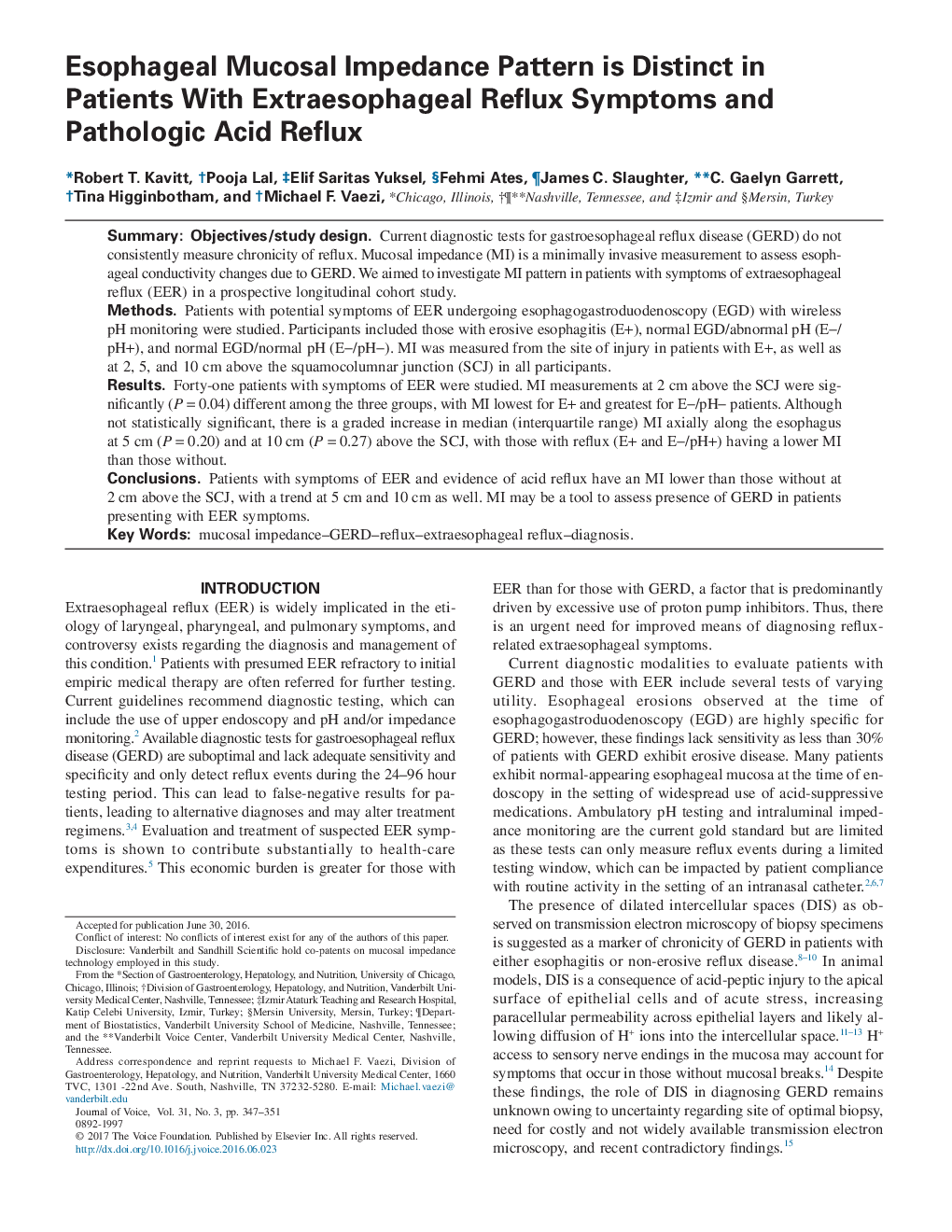| Article ID | Journal | Published Year | Pages | File Type |
|---|---|---|---|---|
| 5124238 | Journal of Voice | 2017 | 5 Pages |
SummaryObjectives/study designCurrent diagnostic tests for gastroesophageal reflux disease (GERD) do not consistently measure chronicity of reflux. Mucosal impedance (MI) is a minimally invasive measurement to assess esophageal conductivity changes due to GERD. We aimed to investigate MI pattern in patients with symptoms of extraesophageal reflux (EER) in a prospective longitudinal cohort study.MethodsPatients with potential symptoms of EER undergoing esophagogastroduodenoscopy (EGD) with wireless pH monitoring were studied. Participants included those with erosive esophagitis (E+), normal EGD/abnormal pH (Eâ/pH+), and normal EGD/normal pH (Eâ/pHâ). MI was measured from the site of injury in patients with E+, as well as at 2, 5, and 10 cm above the squamocolumnar junction (SCJ) in all participants.ResultsForty-one patients with symptoms of EER were studied. MI measurements at 2âcm above the SCJ were significantly (Pâ=â0.04) different among the three groups, with MI lowest for E+ and greatest for Eâ/pHâ patients. Although not statistically significant, there is a graded increase in median (interquartile range) MI axially along the esophagus at 5âcm (Pâ=â0.20) and at 10âcm (Pâ=â0.27) above the SCJ, with those with reflux (E+ and Eâ/pH+) having a lower MI than those without.ConclusionsPatients with symptoms of EER and evidence of acid reflux have an MI lower than those without at 2âcm above the SCJ, with a trend at 5âcm and 10âcm as well. MI may be a tool to assess presence of GERD in patients presenting with EER symptoms.
